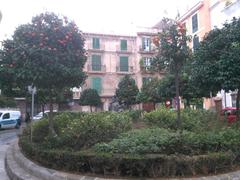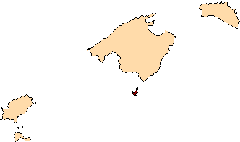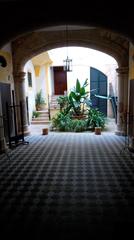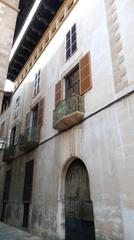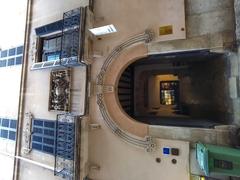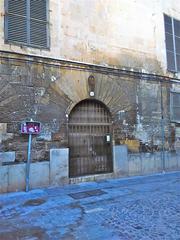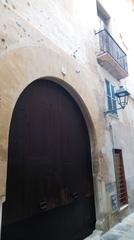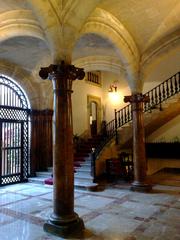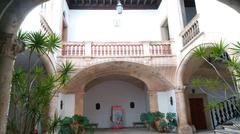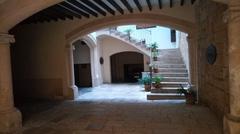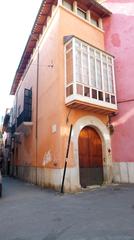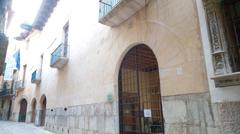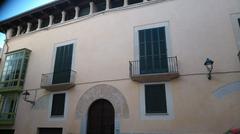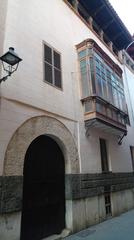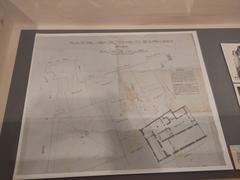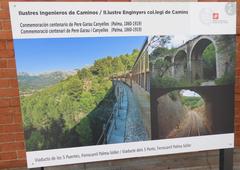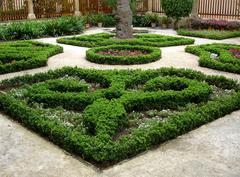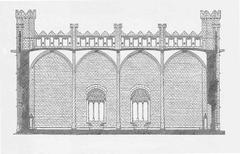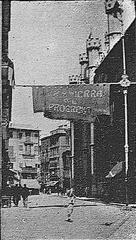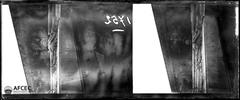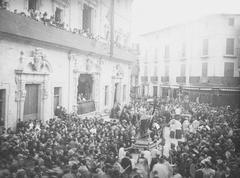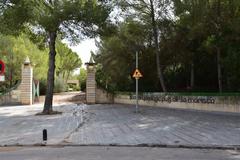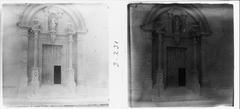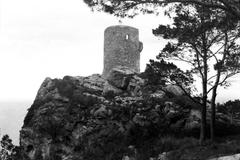Palau de l’Almudaina Visiting Hours, Tickets, and Historical Insights
Date: 18/07/2024
Introduction
Nestled on the scenic waterfront of Palma de Mallorca, the Palau de l’Almudaina offers not just a historical monument but a captivating journey through centuries of varied cultural influences. This magnificent palace stands as a testament to the island’s rich and diverse history, reflecting the architectural and cultural imprints of the Romans, Moors, and Christian conquerors. Originally established as a Roman fortification in the 1st century AD, the site was later transformed into a Moorish alcázar and subsequently into a royal residence by King James I of Aragon. Today, the Palau de l’Almudaina serves as an official residence for the Spanish royal family during their visits to the island and as a museum open to the public. For those planning to visit, this guide provides comprehensive information on the palace’s history, visiting hours, ticket prices, travel tips, nearby attractions, and more (source).
Table of Contents
- Introduction
- History and Significance of Palau de l’Almudaina
- Visitor Information
- Travel Tips
- Nearby Attractions
- Special Events and Guided Tours
- Photographic Spots
- FAQ Section
- Conclusion and Call to Action
History and Significance of Palau de l’Almudaina
A Storied Past - From Roman Roots to Royal Residence
The Palau de l’Almudaina, a magnificent palace gracing Palma de Mallorca’s waterfront, boasts a history as rich and layered as its architecture. Its story stretches back centuries, witnessing the ebb and flow of civilizations and serving as a silent sentinel to the island’s captivating past.
Roman and Moorish Foundations
The palace’s origins can be traced back to the Romans, who established a fortified compound on this site in the 1st century AD. This early structure, known as “Palma,” served as a strategic outpost for the Roman Empire. Centuries later, the Moors conquered Mallorca, leaving their indelible mark on the island, including the Almudaina. They transformed the Roman remnants into a fortified alcázar, a palatial fortress characteristic of Moorish architecture. This period saw the addition of significant defensive structures, including the imposing walls and towers that still stand today. The Arabic word “almudaina” itself translates to “citadel” or “fortress,” reflecting its military importance during this era.
The Arrival of the Christian Conquerors
In the 13th century, King James I of Aragon, also known as Jaume I, reconquered Mallorca from the Moors. This marked a turning point for the Almudaina, as it transitioned from a Moorish stronghold to a royal residence for the newly established Kingdom of Mallorca. King James I initiated significant renovations, infusing the palace with Gothic architectural elements. The majestic Salón del Tinell, a grand hall with soaring arches, is a testament to this period’s architectural influence.
A Royal Legacy - From the Kingdom of Mallorca to the Spanish Crown
The Palau de l’Almudaina continued to serve as a royal residence for the Kings of Mallorca, a dynasty that lasted for a century. It witnessed periods of great splendor and played a pivotal role in the kingdom’s political and social life. After the Kingdom of Mallorca was absorbed into the Crown of Aragon, and later the Spanish Empire, the palace remained an important symbol of royal authority. Spanish monarchs continued to use the Almudaina, albeit less frequently, and it underwent further renovations reflecting changing architectural tastes.
The Almudaina Today - A Window into History
Today, the Palau de l’Almudaina stands as a captivating testament to Mallorca’s multifaceted history. It serves as the official residence of the Spanish royal family during their visits to the island, although it is primarily open to the public as a museum. Walking through its halls and courtyards is akin to stepping back in time. Visitors can explore the grand Salón del Tinell, admire the Gothic arches of the chapel of Saint Anne, and lose themselves in the serene beauty of the Moorish-inspired Patio de Armas. The palace also houses a collection of tapestries, paintings, and furniture, offering glimpses into the lives of those who once inhabited its grand spaces.
Visitor Information
Palau de l’Almudaina Visiting Hours
The Palau de l’Almudaina is generally open to visitors from Tuesday to Sunday, with seasonal variations in opening hours:
- Winter (October to March): 10:00 AM - 6:00 PM
- Summer (April to September): 10:00 AM - 8:00 PM Check the official website for the most up-to-date information.
Palau de l’Almudaina Tickets
Tickets can be purchased at the entrance or online. Pricing varies for adults, children, and senior citizens:
- General Admission: €7
- Reduced Admission (students, seniors, groups): €4
- Free Admission: Children under 5, disabled visitors, and on certain public holidays For the latest ticket prices, please refer to the official site.
Travel Tips
Best Times to Visit
The palace can get crowded during peak tourist season (June to August), so visiting in the early morning or late afternoon is recommended for a more serene experience.
How to Get There
Palau de l’Almudaina is located in the heart of Palma de Mallorca. It is easily accessible by public transport, taxi, or even a leisurely walk from many central locations.
What to Bring
Comfortable walking shoes, a camera for photos, and a light jacket for cooler indoor areas.
Nearby Attractions
Palma Cathedral
Just a stone’s throw away, the Palma Cathedral (La Seu) is a must-visit for its stunning Gothic architecture.
Parc de la Mar
A beautiful park near the palace where you can relax and enjoy views of both the Palau de l’Almudaina and the Palma Cathedral.
Special Events and Guided Tours
The palace occasionally hosts special events, exhibitions, and guided tours. Check the official website or local tourism boards for current offerings.
Photographic Spots
Salón del Tinell
Capture the grandeur of its soaring arches.
Patio de Armas
A beautiful spot for Moorish-inspired architecture.
FAQ Section
What are the visiting hours for Palau de l’Almudaina?
Visiting hours vary seasonally. Generally, the palace is open from Tuesday to Sunday. Check the official website for current times.
How much do tickets to Palau de l’Almudaina cost?
Ticket prices vary for adults, children, and senior citizens. Discounts are available for groups and students. Visit the official website for the latest pricing.
Is photography allowed inside the Palau de l’Almudaina?
Yes, photography is allowed in most areas of the palace, but the use of flash and tripods is prohibited.
Are guided tours available?
Yes, guided tours are available and can be booked in advance through the official website or at the entrance.
Is the palace suitable for children?
Yes, the palace is family-friendly and offers educational materials for children to learn about its history.
Are there any dining facilities within the palace?
No, there are no dining facilities within the palace, but there are several cafes and restaurants nearby in the Old Town.
Conclusion and Call to Action
The Palau de l’Almudaina is more than just a historical landmark; it is a living testament to the island’s rich tapestry of cultures. Be sure to include this royal residence in your travel itinerary. For more updates and travel tips, download the mobile app Audiala, check out other related posts, or follow us on social media (source).
References
- Exploring Palau de l’Almudaina - History, Visiting Hours, and Ticket Information, 2024, Author (source)
- Discovering Palau de l’Almudaina - History, Visiting Hours, and Tips, 2024, Author (source)
- Visiting Palau de l’Almudaina - Hours, Tickets, and Tips for a Memorable Experience, 2024, Author (source)



